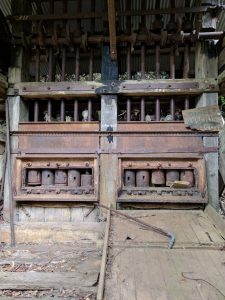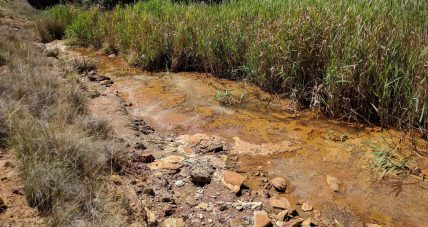

Past industrial processes, including gold mining, used mercury on a regular basis. There were few attempts to control industrial waste so pollution was released directly into the environment. One dimension of Dr Lawrence is to locate anthropogenic soil deposits that have been contaminated by past industrial activity, including the use of mercury. These sediment layers are hidden parts of the landscape that tell us about past human activity and the scale of environmental change since European settlement (Figure 1).
As waste was often flushed into waterways, it may have been carried many kilometres downstream from industrial sites and the current users of the land may not be aware of potential contamination so identifying processes that produced waste and tracing its movement has important implications for land management today.
Dr Lawrence is also interested in disused industrial sites as heritage places and in the issues of contamination management that arise. How do we make sure industrial sites are as safe as possible while also respecting their heritage significance? Contamination and the cavalier attitudes in the past to industrial waste, human health, and environmental protection are all important parts of the story of early industry.
Cleaning up polluted sites can thus pose challenges for maintaining the physical traces that make them historic places (Figure 2).

